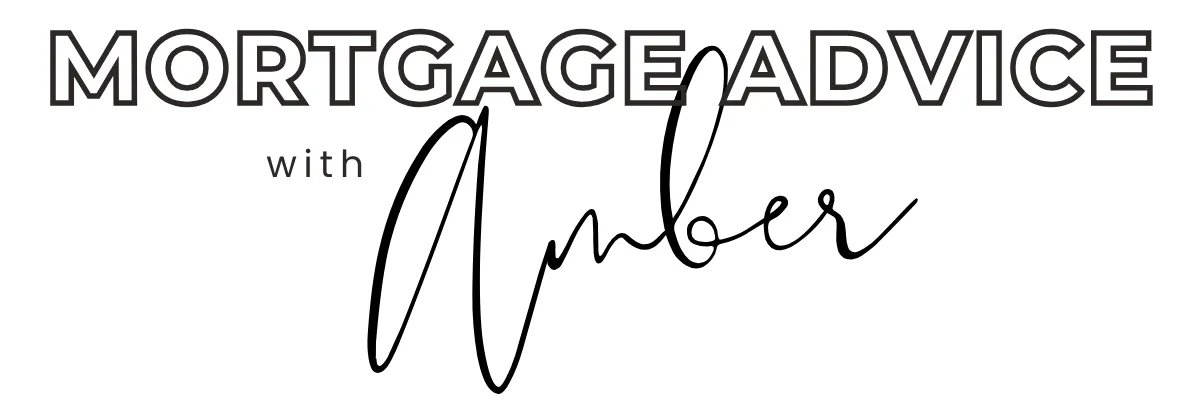
5 Mortgage Terms Every First-Time Homebuyer Needs to Know (and Why They Matter)
By Amber Jones, Certified Mortgage Advisor
If you’ve started researching down payment assistance programs, pre-approvals, or loan options, you’ve probably already stumbled into the alphabet soup of the mortgage world—LTV, DTI, APR, PITI…
And you're not alone if you’ve asked yourself:
“What do these mortgage terms even mean?”
The home loan process can feel overwhelming when you're new to it. But here's the truth: once you understand the basic terms, you’ll feel a whole lot more confident and less stressed as you move through your homebuying journey.
In this post, I’ll break down five of the most common mortgage terms I explain to first-time buyers—and why each one matters.
🎥 Watch the Video First
👉 Prefer to watch instead of read? Here's the full breakdown in video form. (Or keep scrolling for the full written guide.)
1. LTV — Loan-to-Value Ratio
What it means:
LTV stands for Loan-to-Value Ratio. It shows how much of the property’s value you’re borrowing with your mortgage.
How it’s calculated:
Take the loan amount and divide it by the appraised value of the home. The result is a percentage.
Example:
If you buy a $400,000 home and borrow $320,000, your LTV is 80%. That means you’re financing 80% of the home’s value and you have 20% equity.
Why it matters:
A lower LTV can help you qualify for a better interest rate.
If your LTV is above 80%, you’ll likely need mortgage insurance (PMI).
LTV also affects which loan programs you’re eligible for.
✨ Pro tip: Even a small difference in LTV can save you money over the life of your loan.
2. DTI — Debt-to-Income Ratio
What it means:
DTI stands for Debt-to-Income Ratio. It shows what percentage of your income goes toward debts each month. Lenders use it to see if your mortgage will be affordable.
How it’s calculated:
Divide your monthly debt payments by your gross monthly income (income before taxes).
Example:
If you make $10,000 a month and all of your debts—including your new mortgage—equal $5,000, then your DTI is 50%.
Why it matters:
Most lenders want your DTI at 50% or below.
There are two types:
Front-end DTI: housing costs only.
Back-end DTI: housing + all other monthly debts.
A lower DTI means you’re more likely to be approved and may qualify for better terms.
👀 Remember: Lenders don’t want you house-poor—they want your mortgage to be manageable.
3. APR — Annual Percentage Rate
What it means:
APR stands for Annual Percentage Rate. It’s often confused with the interest rate, but it’s actually different.
The difference:
Interest rate is the cost of borrowing the money (your monthly payment).
APR includes the interest rate plus other loan costs—like points, fees, and certain closing costs—spread out over the life of the loan.
Why it matters:
APR is useful for comparing two loan offers side by side.
But if you plan to sell or refinance within a few years, the interest rate and upfront costs will matter more than the APR.
🧠 Think of APR as a comparison tool, not the full picture.
4. Cash to Close
What it means:
This is the total amount of money you’ll need at closing to buy the home. Think of it as your “all-in investment.”
It includes:
Your down payment
Closing costs
Prepaid items like taxes and insurance
Why it matters:
Many first-time buyers save for a down payment but forget about closing costs and prepaid expenses.
Knowing your total “cash to close” ahead of time prevents surprises on closing day.
💡 Pro tip: You don’t bring actual cash—you’ll typically wire funds to the title company.
5. Escrow Account (a.k.a. Impound Account)
What it means:
An escrow account is like a built-in savings account managed by your lender. A portion of your monthly mortgage payment goes into it, and the lender uses those funds to pay:
Property taxes
Homeowners insurance
Sometimes HOA dues
Why it matters:
Escrow helps spread large annual bills into manageable monthly payments.
If your mortgage payment changes over time, it’s often because of escrow adjustments (taxes and insurance), not because your interest rate changed.
Some loans require escrow (like FHA), but with conventional and VA loans, you may have the option to waive it if you have enough equity.
⚠️ Tip for self-employed buyers: Skipping escrow can give you flexibility if your income fluctuates month to month.
🧠 Final Thoughts from Amber
“The more you understand the mortgage terms upfront, the more empowered you'll be in making smart financial decisions. Whether it's choosing the right loan program, managing your budget, or understanding what truly makes a loan affordable, it starts with knowing the language of homeownership.”
You don’t need to memorize every term in the industry—but getting clear on the basics like LTV, DTI, APR, cash to close, and escrow can dramatically reduce stress and help you feel in control of your financial future.
🙋 Frequently Asked Questions (FAQs)
1. What is the difference between interest rate and APR?
The interest rate is the cost to borrow money. The APR includes the interest rate plus other loan costs spread over the loan term. Use APR to compare loans side-by-side.
2. What’s a good DTI ratio for mortgage approval?
Most lenders prefer your back-end DTI to be below 43-50%, though some programs allow higher with strong credit and reserves.
3. Can I buy a home with less than 20% down?
Yes! Many programs allow 3–5% down. But if your LTV is over 80%, you’ll likely need mortgage insurance unless using a VA or USDA loan.
4. Do I have to have an escrow account?
It depends on your loan type. FHA requires it. Conventional loans may allow you to opt out with at least 5–10% equity—ask your lender about options.
5. How can I estimate my cash to close?
Use a lender’s loan estimate or ask directly. It includes your down payment, closing costs, and prepaid items like taxes and insurance.
💬 Ready to Get Pre-Approved or Just Have Questions?
I’d love to help! I'm Amber Jones, a Certified Mortgage Advisor, and I specialize in helping first-time buyers understand and navigate the home loan process with confidence.
📞 Book a free 15-minute consultation here
🎥 And don’t forget to watch, like, and share the full video if this was helpful!

